
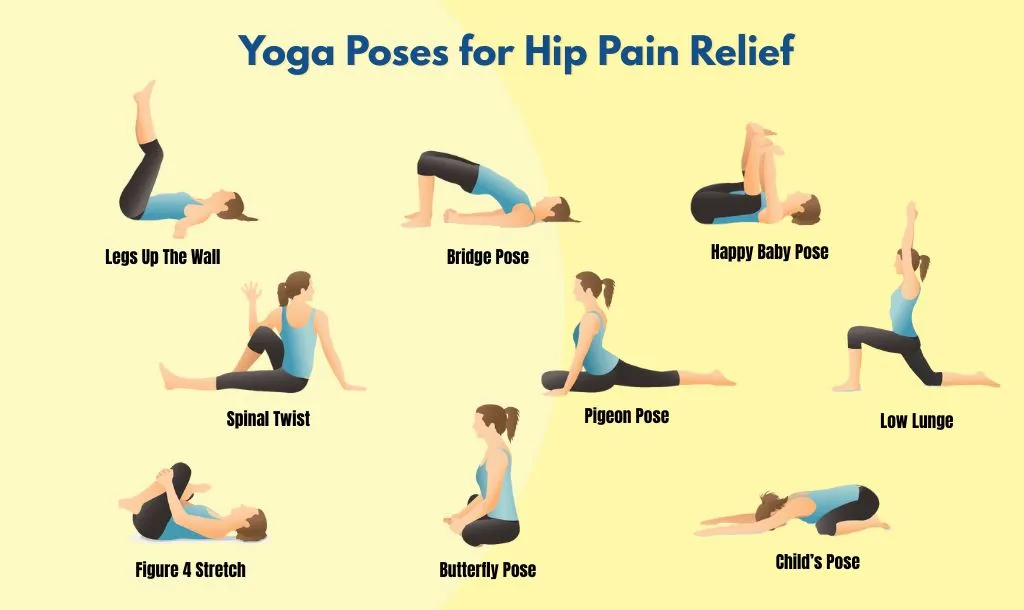
If you’re struggling with nagging hip pain—age-related, from sitting for long hours, from old injuries, or arthritis—you don’t need extreme stretches or intense workouts to feel better. Gentle yoga can help!
Yoga for hip pain combines gentle stretching, strengthening, and mindful movement to reduce joint stiffness, improve mobility, and decrease inflammation. These 9 therapeutic poses target common hip issues like arthritis, bursitis, and age-related stiffness without aggravating existing conditions.
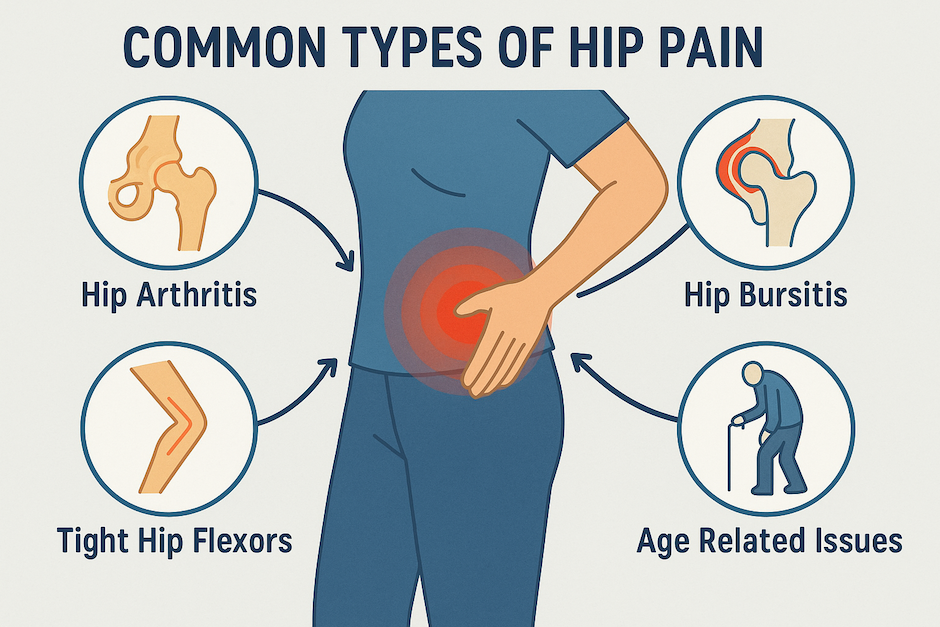
Yoga offers a safe, natural way to ease hip pain without forcing your body into complicated positions or pushing through discomfort. By focusing on gentle stretches, mindful movement, and joint-friendly postures, you can gradually regain comfort and mobility in your hips.
But here’s something important: not all hip pain is the same. To find the right approach for relief, it’s crucial to understand what’s causing your hip pain in the first place. Below is a simple, beginner-friendly guide to the most common causes of hip discomfort and how gentle yoga can provide relief:
With age, cartilage in the hip joint naturally wears down, leading to arthritis. This often shows up as stiffness and dull aches. Yoga’s slow, controlled movements help lubricate joints and reduce stiffness, offering natural relief without harsh impact.
Hip bursitis happens when small, fluid-filled sacs in the hips (bursae) get irritated, often from repetitive movements or poor posture. Gentle yoga stretches help release tension around the joint, improve circulation, and calm inflammation.
Sedentary lifestyles cause the front of your hips (hip flexors) to tighten, pulling on the lower back and hips. Yoga’s hip openers target these tight muscles, restoring balance and comfort.
With age, our joints naturally lose some flexibility and strength. Gentle and controlled yoga stretches keep hips mobile, strong, and more resilient, supporting you in staying active and independent.
Studies show that yoga can reduce hip pain by 30–50% within six weeks. Slow, mindful movements improve circulation, reduce stiffness, and ease pain without aggravating sensitive joints.
So, if you’re still wondering whether yoga is good for hip pain, it absolutely is! When practiced gently and mindfully, yoga helps reduce hip pain, improve mobility, and strengthen the muscles that support your joints.
These gentle yoga poses are safe for beginners and ideal for easing hip pain:
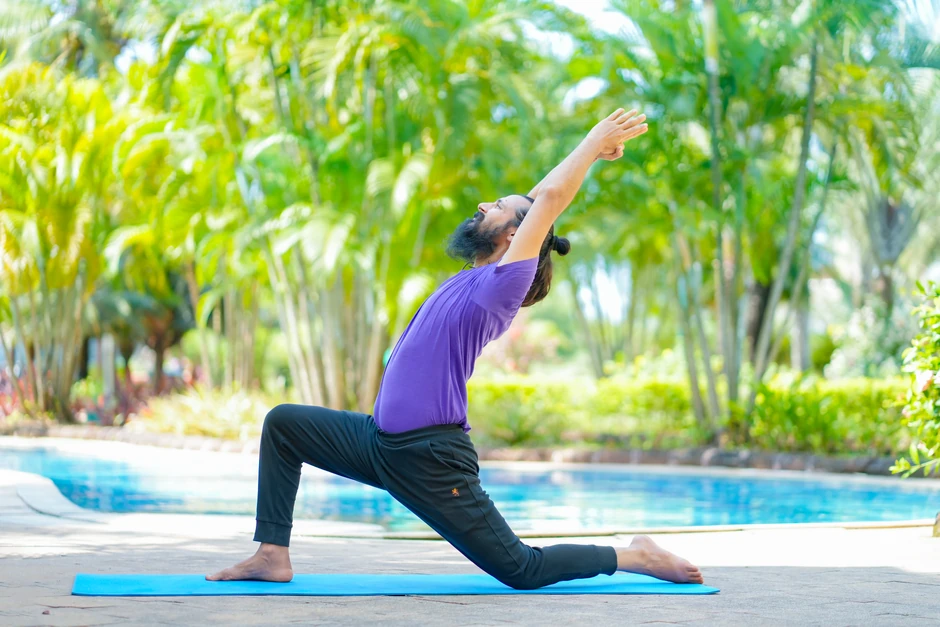
This pose gently stretches the hip flexors and thighs, counteracting tightness from sitting and promoting better hip alignment.
Modifications: Place a cushion under the back knee for extra support.
_optimized.webp)
This is a great hip flexor release that gently stretches the hips and promotes relaxation.
Modifications: Use a chair—sit down, lean forward, resting elbows on knees.
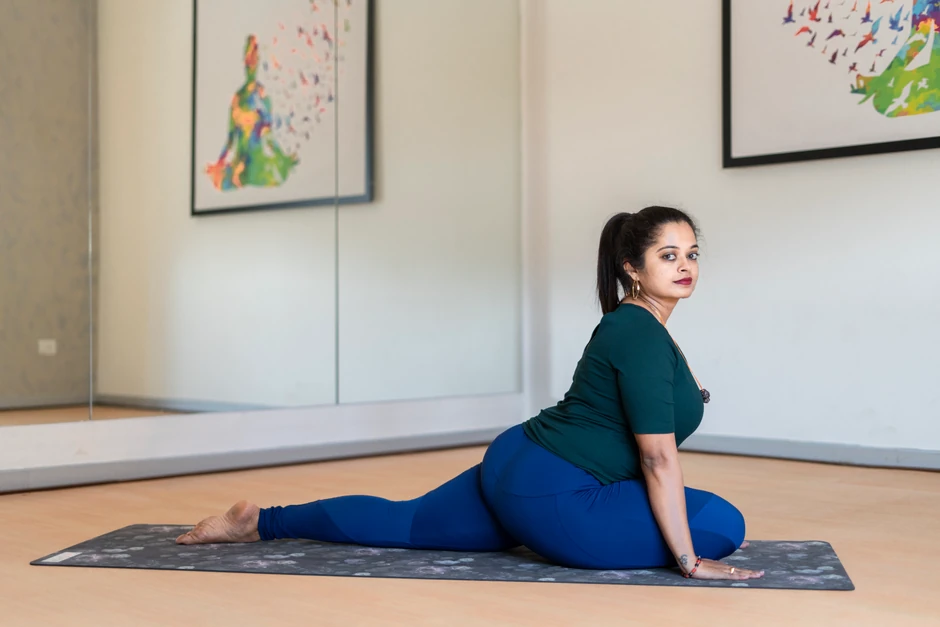
This pose releases deep hip tension and targets the outer hip muscles.
Modifications: Sit on a chair, cross ankle over opposite knee, lean forward gently.
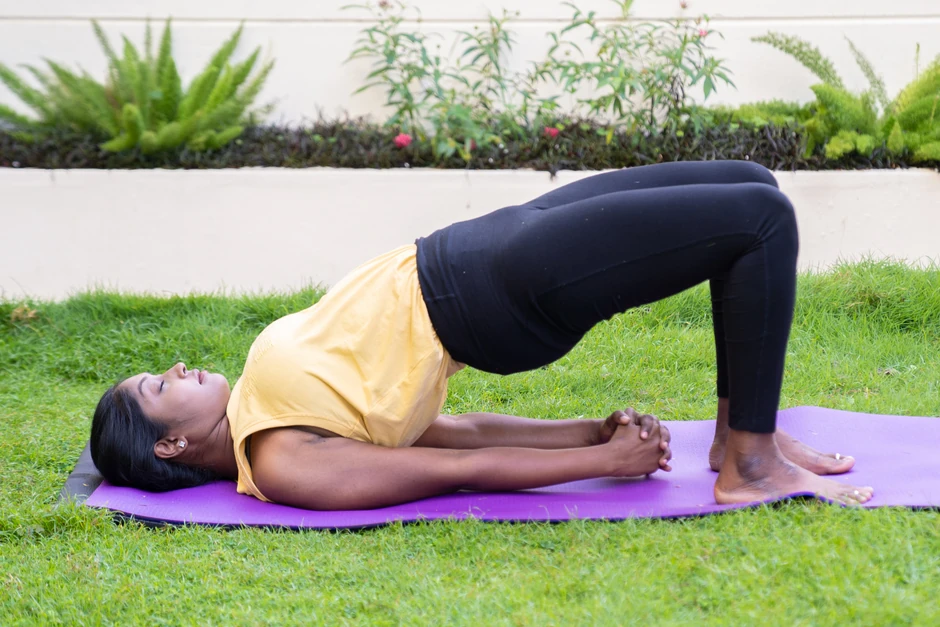
This pose helps strengthen the glutes and releases front-hip tension.
Modifications: Place a cushion under the hips for a supported version.
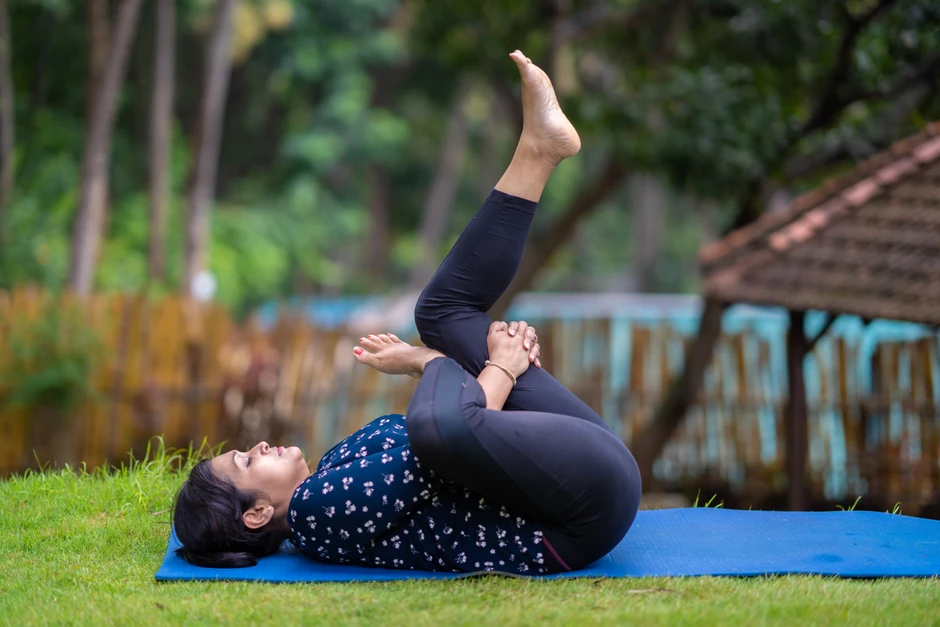
This is a therapeutic hip stretch that opens the hips and releases lower back tension.
Modifications: Keep the lower foot on the ground if pulling up feels intense.
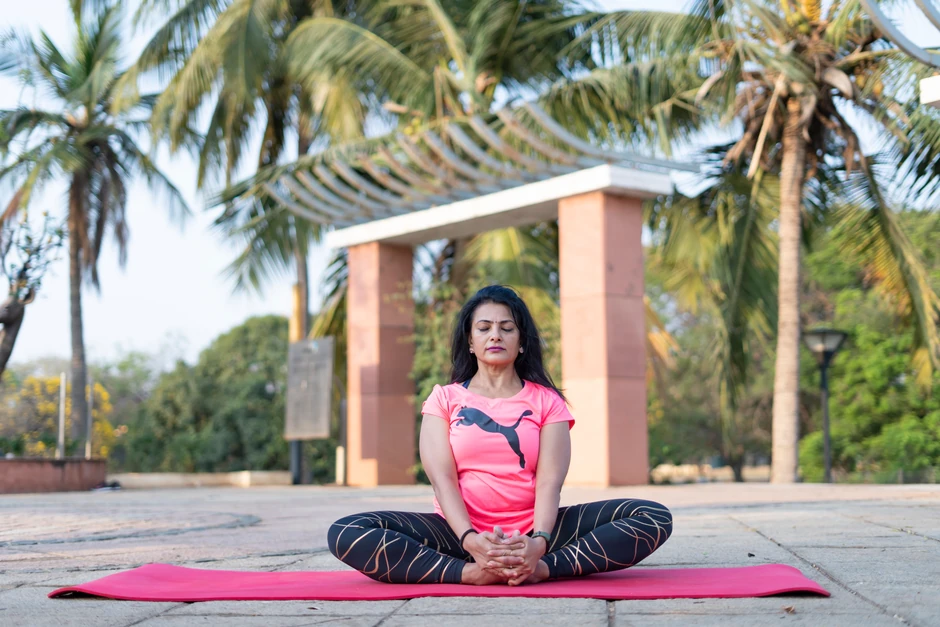
This pose softly opens the inner hips and promotes relaxation.
Modifications: Use a chair—cross ankles and gently press knees outward.
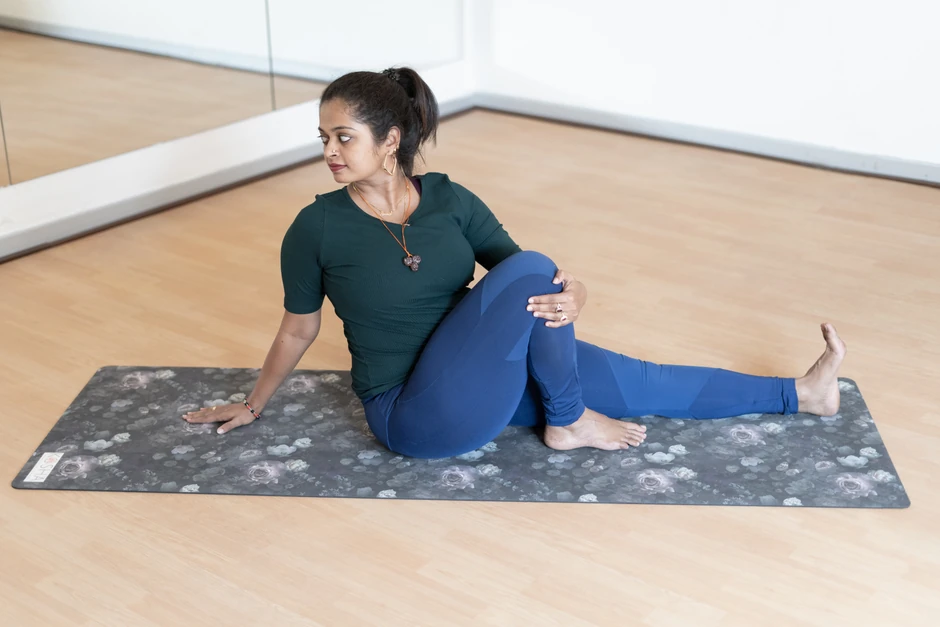
This is a great twist to improve hip and spine mobility, promoting gentle rotation.
Modifications: Sit in a chair with feet flat; if cross-legged is uncomfortable.
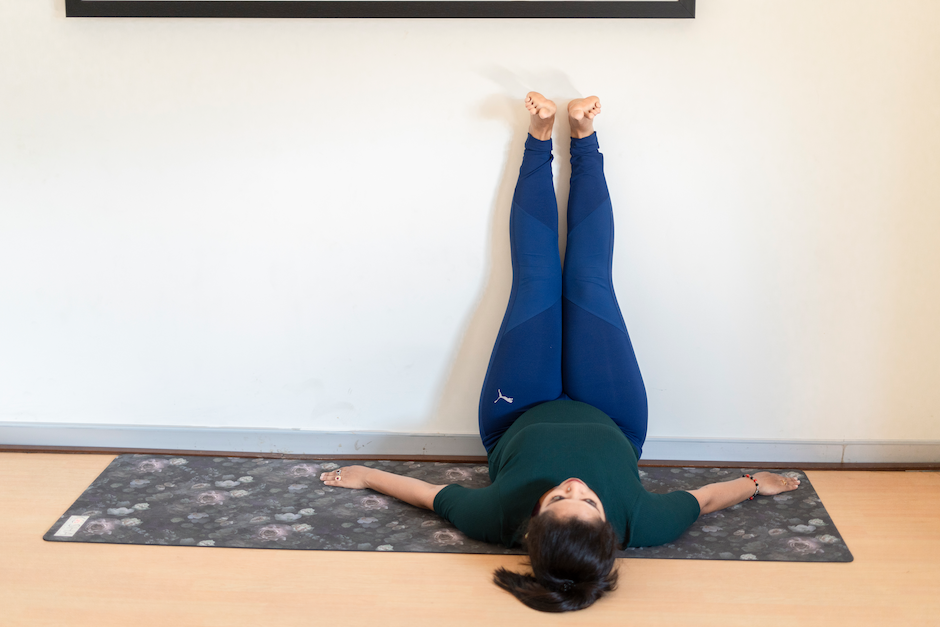
This restorative pose reduces hip tension, improves circulation, and provides deep relaxation.
Modifications: Place a cushion under your hips or do the pose on your bed.
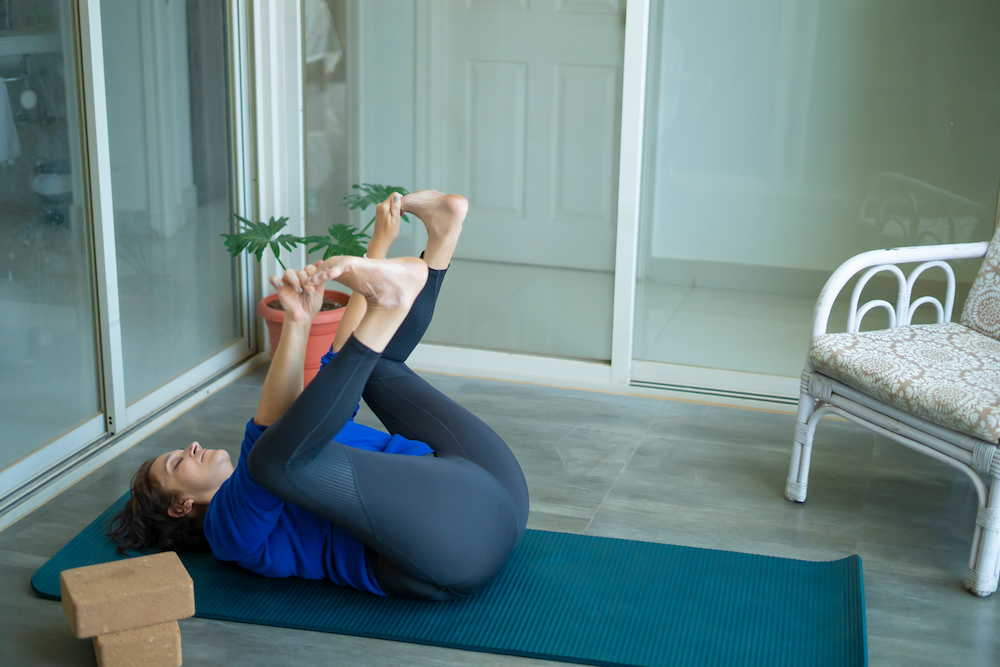
This ultimate restorative pose releases deep hip tension, gently stretches the inner thighs, and promotes full-body relaxation.
Modifications: Use a yoga strap around each foot if you can’t comfortably reach. You can also hold behind your knees instead of your feet for less intensity.
Want to learn these poses with proper form and alignment while ensuring maximum safety? Book a free 1-on-1 session with a coach today!
[inline-CTA-1]
When it comes to yoga for hip pain relief, consistency is key. And the good news is—you only need 10 minutes a day to start feeling a difference. This simple routine combines mobility, gentle stretching, and light strengthening to help your hips feel more open, relaxed, and pain-free. It’s perfect for anyone with hip pain and for beginners.
Your Easy 10-Minute Routine
1. Warm-Up (2 Minutes)
2. Stretch (6 Minutes)
3. Strengthen (1 Minute)
4. Restore (1 Minute)
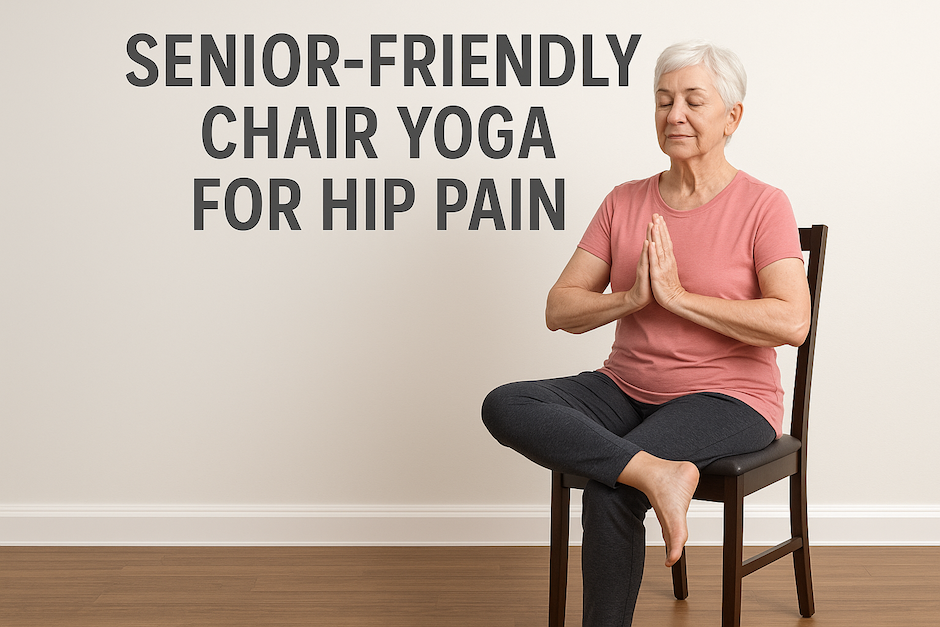
Yoga should be accessible for everyone, including those who have limited mobility, balance concerns, or just feel more comfortable practicing seated. Chair yoga offers all the benefits of gentle hip stretches while keeping things safe, supportive, and easy to follow.
These chair-friendly poses are perfect for seniors or anyone who needs a gentler approach.
[GC]
This is a great exercise to mobilize the hips, loosen up stiff joints, and improve circulation.
This pose increases rotational mobility in the hips and spine.
This pose helps ease outer hip tightness, especially after sitting.
This gentle stretch helps release tension in the hips and lower back.
Experience the power and accessibility of chair yoga yourself. Book a free group class today!
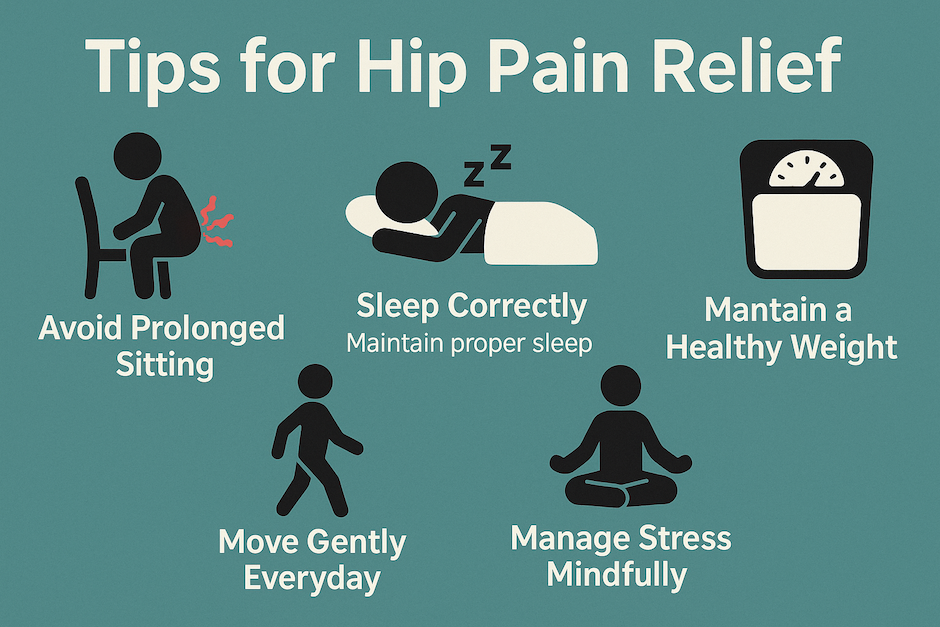
Along with gentle yoga poses for hip pain relief, small everyday habits can make a huge difference in how your hips feel. By taking simple steps daily, you can reduce stiffness, improve mobility, and help prevent flare-ups of hip pain.
1. Avoid Prolonged Sitting: Long hours in chairs cause hip flexors to tighten and joints to stiffen. Stand up, stretch, or walk for 2–5 minutes every 30 minutes. Gentle hip circles while standing can also work wonders.
2. Optimize Your Sleep Position: Sleeping the wrong way can strain your hips. Sleep on your side with a pillow between your knees to keep your hips aligned, or on your back with a small cushion under your knees.
3. Include Gentle Daily Movement: Light activities keep hips lubricated and flexible. Incorporate walking, swimming, or 10-minute yoga routines into your day to keep your hips active without stress.
4. Maintain a Healthy Weight: Extra weight puts more pressure on hip joints. Focus on small, sustainable changes like portion control and daily movement rather than restrictive diets.
5. Manage Stress Mindfully: Stress can increase muscle tension and worsen pain perception. Use yoga breathwork (slow, deep breaths) or short mindfulness breaks to keep your body relaxed and your hips at ease.
Begin Your Gentle Hip Pain Relief Journey
Whether it’s from sitting too long, age-related stiffness, or everyday stress on your joints, gentle yoga offers a natural, effective way to find relief, even if you’re a total beginner.
By focusing on safe, supportive movements, you can gradually reduce pain, improve flexibility, and regain comfort in your daily life.
Our certified yoga instructors specialize in gentle, joint-friendly practices tailored for your unique needs. With personalized 1-on-1 sessions and real-time guidance and modifications, you can find relief from hip pain safely and effectively.
Book a free 1-on-1 session today!
[inline-CTA-2]
Yes! Yoga is highly effective for relieving hip pain. It helps reduce joint stiffness, ease muscle tension, and improve mobility without putting extra strain on the hips.
The best yoga poses for hip pain are gentle and supportive, such as:
These poses are beginner-friendly and can be done at home with simple props.
For noticeable relief, aim to practice 3 to 5 times per week, even if it’s just 10 minutes a day. Consistency helps improve flexibility and reduce stiffness over time.
Absolutely! With the right support, guidance, and modifications, beginners can safely do yoga poses for hip pain relief. You don’t need flexibility or prior yoga experience—just start with simple movements and listen to your body.
Yes! Chair yoga is a safe and accessible option, especially for seniors or anyone with balance concerns. Chair-based hip stretches can ease stiffness, improve circulation, and reduce pain without having to get on the floor.


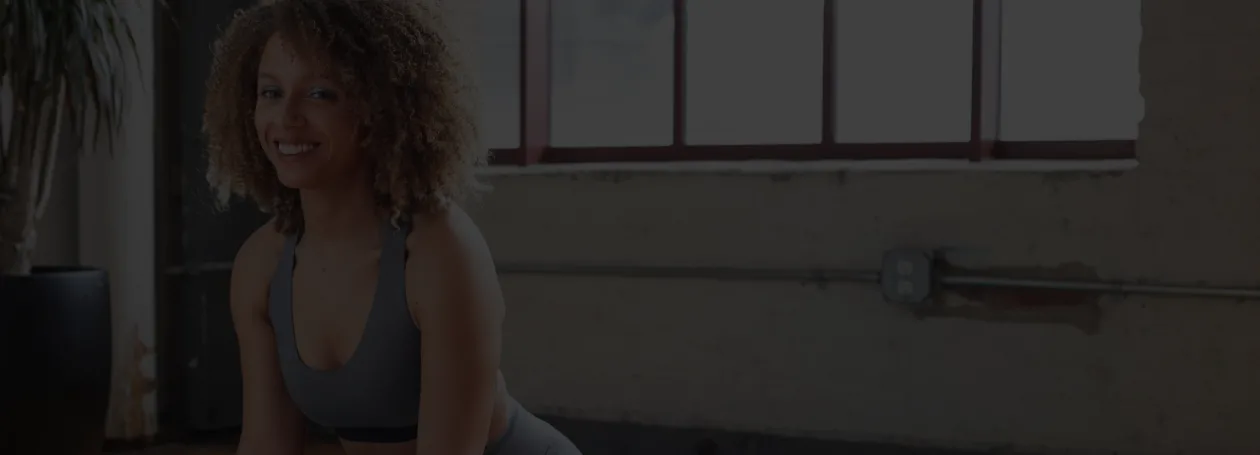
Receive personalized guidance tailored to your unique fitness goals, live with a dedicated coach—no credit card required.